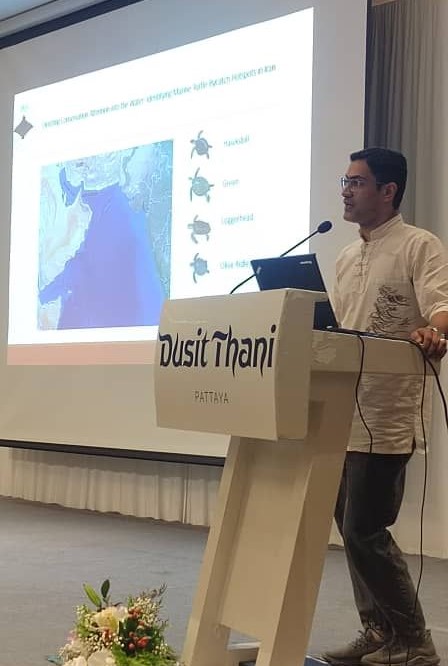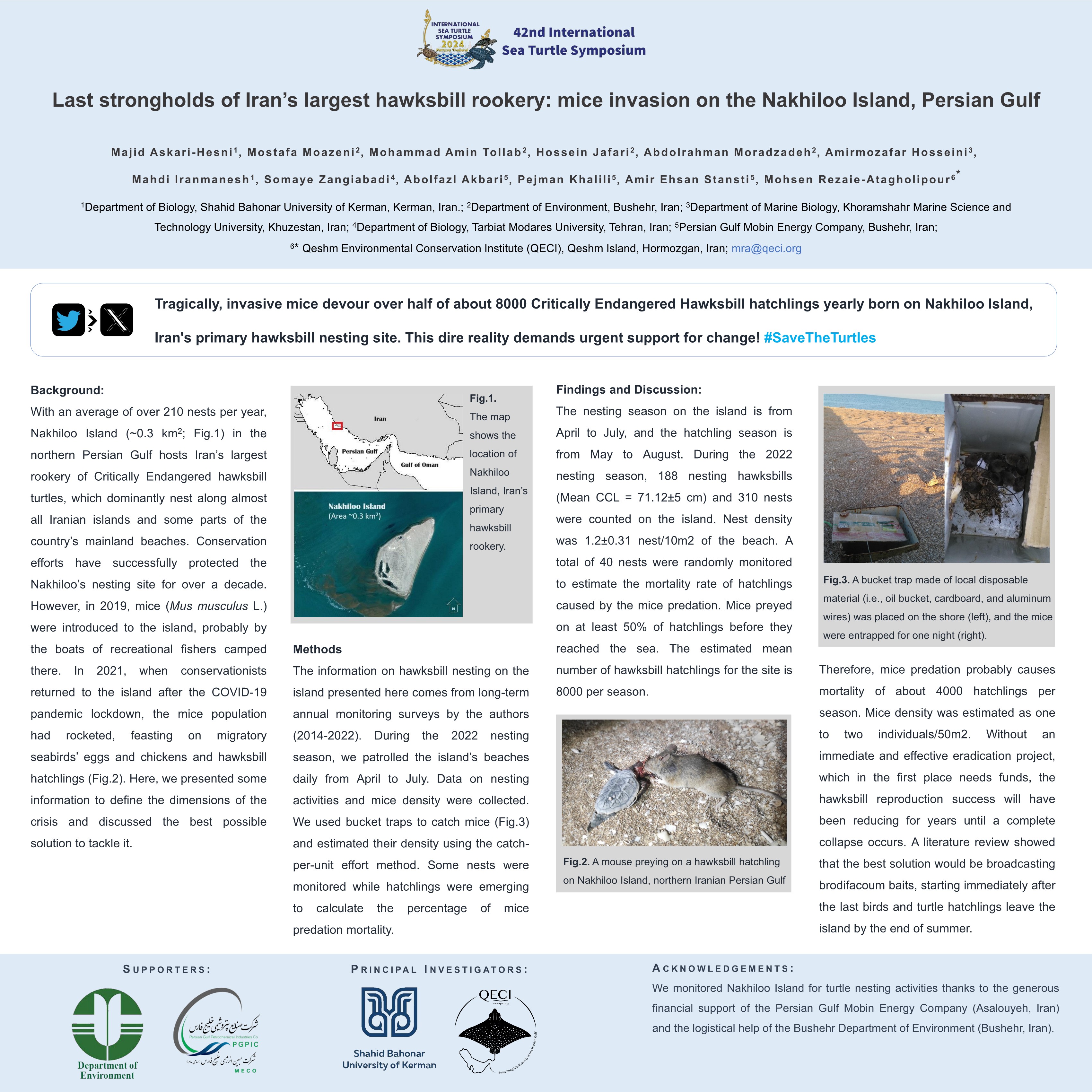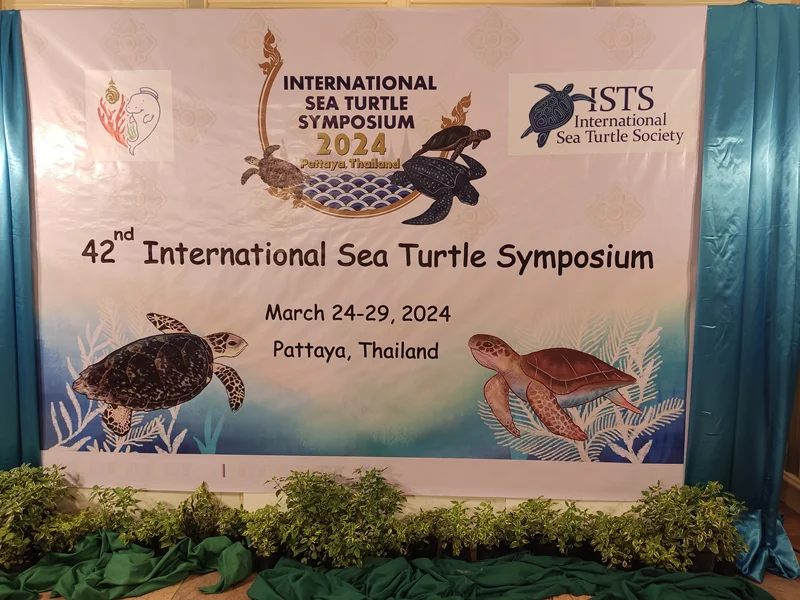In March of this year, the 42nd International Sea Turtle Symposium took place in the Dusit Hotel in Pattaya, Thailand. Researchers, academics, marine conservationists, and other enthusiasts in sea turtle research and conservation from over 60 countries attended this event. In addition to numerous workshops and specialized sessions, researchers presented their latest findings in various areas such as in-water biology, nesting biology, threats and fisheries, education, and more. QECI proudly joined this esteemed gathering, showcasing our research outcomes and highlighting the prevailing challenges impeding sea turtle conservation efforts in south Iran.

At a specialized panel addressing "Threats and Fisheries," Mohsen Rezaie-Atagholipour, QECI lead scientist, presented our research on identifying hotspots of the sea turtle bycatch (i.e., the unintentional catch in fishing gear) in the southern Iranian waters in a talk titled “Directing conservation attention into the water.” Despite sea turtles being among the nationally protected species and various conservation efforts aimed at protecting their nesting beaches along the Iranian coastline, no measures have been taken to identify the hotspots of their bycatch within Iranian waters. The QECI research team identified these crucial areas across a wide expanse of the national waters by incorporating local fishermen's ecological knowledge with scientific methods.

Furthermore, at a specialized panel on "Nesting Biology," we presented the results of our collaboration with the Shahid Bahonar University of Kerman on the issue of the increasing mice population invading Nakhiloo Island in Bushehr Province. Nakhiloo Island annually hosts over 200 hawksbill turtle nests on its beaches, resulting in the birth of more than 8,000 hawksbill hatchlings each year. Unfortunately, in recent years, invasive mice have been preying on over half of these hatchlings before they reach the sea. Our research, literature reviews, and consultations with experts have led us to the best approach to address this issue. However, its implementation requires robust support from governmental and local community entities.



Comment